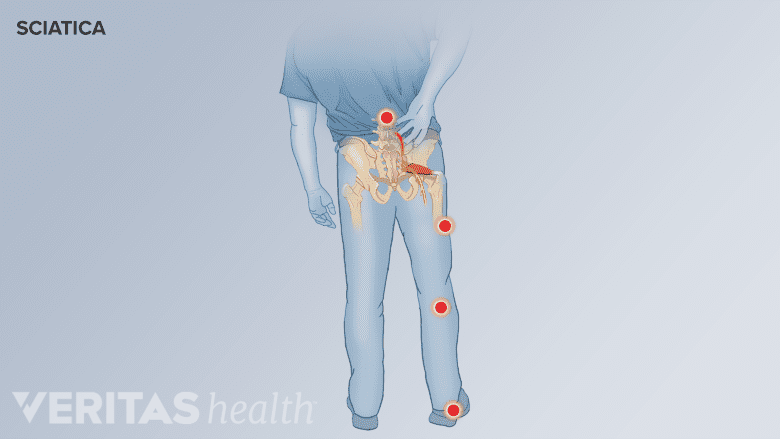Specifically identifying and describing symptoms plays a key role in obtaining a diagnosis of the underlying cause of low back pain.
Knowing how to track and describe one’s lower back pain symptoms is often the first step in obtaining effective pain relief.
In This Article:
Common Symptoms of Lower Back Problems
The specific symptoms vary considerably, and how the symptoms develop, what they feel like, and what makes the pain better or worse are all important to understanding the underlying diagnosis.
Typical signs and symptoms include some combination of:
Dull, aching pain
Pain that remains within the low back (axial pain) is usually described as dull and aching. The aching back may be accompanied by muscle spasms, stiffness, and aches in the hips and pelvis.
Pain that travels to the buttocks, legs, and feet

Sciatica symptoms travel down into the leg and/or foot.
Sometimes low back pain includes a sharp, stinging, tingling or numb sensation that moves down the thighs and into the leg and/or foot, commonly called sciatica. The medical term is radicular pain.
Sciatica is caused by irritation of the sciatic nerve that starts in the lower back, and is usually only felt on one side of the body.
Pain that is worse after prolonged sitting
Sitting puts pressure on the lumbar discs, causing low back pain to worsen after sitting for long periods of time. Walking and stretching can alleviate low back pain quickly, but returning to a sitting position may cause symptoms to return.
Pain that feels better when changing positions
Depending on the underlying cause of pain, some positions will be more comfortable than others. For example, with lumbar spinal stenosis walking normally may be difficult and painful, but leaning forward onto something, such as a shopping cart, may reduce pain. How symptoms change with shifting positions can help identify the source of pain.
Pain that is worse after waking up and better after moving around
Many who experience low back pain report symptoms that are worse first thing in the morning. After getting up and moving around, however, symptoms are relieved. Pain in the morning is due to stiffness caused by long periods of rest, decreased blood flow with sleep, and possibly the quality of mattress and pillows used.
Of course, there are other ways people experience low back pain. Low back pain varies on an individual level, and many factors influence the pain experience, including mental and emotional health, financial stress, or exercise and activity level.
How Low Back Pain Develops Over Time

Degenerative disc disease-related low back pain fluctuates but worsens gradually over time.
Depending on the cause of low back pain, the onset of symptoms can vary widely. Back pain may include:
Pain that develops slowly
Symptoms caused by repetitive motions or stress-inducing positions tend to come on slowly and progressively worsen. Pain may develop after certain activities or at the end of a long day, and may feel like a constant ache.
Pain that comes and goes, but gets worse over time
Low back pain caused by degenerative disc disease can be felt off and on, but pain flare-ups get progressively more severe over a long period of time.
Immediate pain after an injury
Sudden or jarring movements can damage the spine and its supportive muscles, causing immediate, acute pain.
Delayed symptoms after injury
Sometimes symptoms develop or get worse a few hours or days after an accident or injury. Delayed pain is generally thought of as a side effect of natural healing processes of muscles.

